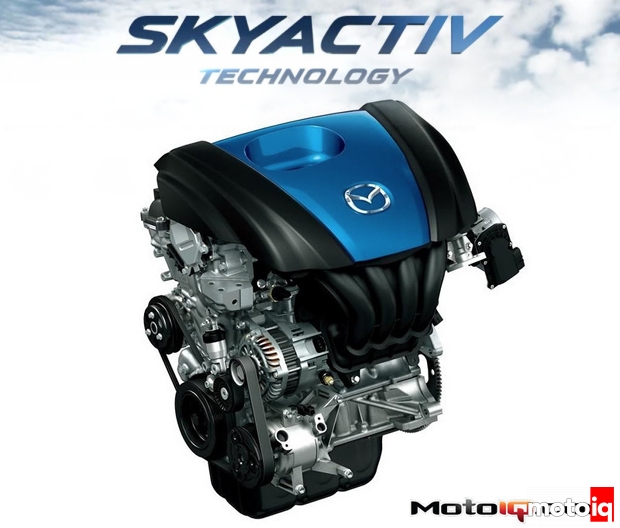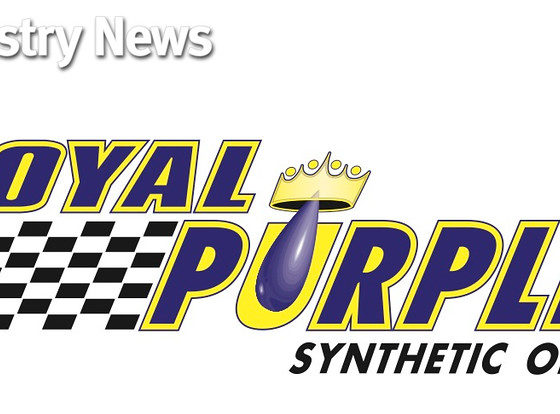,
 |
| One of the Skyactiv G engine’s design goals was weight reduction, particularly reciprocating weight. The old Mazda 2 liter engine’s crankshaft was designed to take the load of turbocharging and while a pretty beefy piece, it was way overbuilt for a lower revving naturally aspirated application. |
How did Mazda achieve the often divergent goals of high fuel economy and decent performance? The Skyactiv gasoline engine is an alloy 2 liter, twin cam 4 valve per cylinder engine, which so far sounds pretty unremarkable. However, this engine employs some features are are very remarkable.
 |
| The Skyactiv crank is much light and more compact. It is also fully counterweighted. Lighter weight means freer revving, while full counterweighting reduces vibrations and torsional stress on the crank, important because the Skyactiv engine has a very long stroke. Check out the reduced journal diameters, this is also a friction reduction strategy. Small journals have less bearing surface speed. |
Mazda first sought to reduce the mass of the engine. The entire engine has undergone a lot of stress and vibration nodal analysis to pare every possible gram from it and its accessories while improving NVH. Overall, the Mazda engineering team was able to pare 10 percent from the engine’s mass over the old design. The losses include 20 percent lighter pistons and 15 percent lighter connecting rods as well as a much lighter crank. The resultant reduction in reciprocating weight makes for a smoother and more responsive engine.
 |
| The older engine’s piston (left) occupied a much bigger bore, the piston is on the left. The Skyactiv piston (right) is smaller and lighter. It also has a racing piston style slipper skirt which reduces weight and friction. You can see how much smaller the surface area is. Note the anti friction coating on both pistons. The silver dots on the skirts are nothing super duper or high tech, they are simply where the piston is indexed in the tooling. |
Light weight helps you get to your design goals, but the most interesting part about the Skyactiv engine is its ability to run a sky high 13:1 compression ratio on inexpensive 87 octane unleaded fuel. (Skyactiv engines in other countries run 14:1 compression ratio but must run 91 or higher octane fuel). This is the highest compression ratio of any production engine. (The next highest compression ratio engines are found in the Ferrari 458 at 12.5:1 and the Lexus IS-F at 12:1). The high compression ratio is a large part of the reason why the engine has such high thermal efficiency with a good level of performance.
 |
| The Skyactiv piston is a strutted slipper skirt design, just like a racing piston, and has many of the same design features as current racing pistons such as butresses between the ring land area and the piston strut. The reduced skirts are lighter and have less friction. |
How does Mazda archive the conflicting goal of running a high compression ratio with a low octane fuel without detonation rattling the engine apart? The main thing is through the use of direct cylinder injection. In case you didn’t know, in a direct injection engine, fuel is injected directly into the combustion chamber. The advantages of this are many fold, first when the fuel is injected directly into the cylinders, its vaporization occurs totally in the combustion space. This absorbs a lot of heat from the cylinder and the combustion space in general. Less heat results in a lower propensity to detonate.
 |
| The Skyactiv piston has a high dome for high compression, hard anodized ring grooves for long life and narrow low tension rings. The Skyactiv piston really looks like a modern racing piston! |
 |
| The Skyactiv rod above is much lighter than the older rod below. By using a lot of stress analysis to take away metal where it’s not needed and add it to where it is, it is probably stronger than the old rod too! |
 |
| When the rod is held sideways you can really see how the weight was pared from a neutral direction and added to the bending direction. |




6 comments
These type of engines are only restricted by the fact most owners want to use 87 octane. Imagine if you could tune these engines for a 91 or higher octane. I imagine in hot weather these high compression engines detune themselves a lot with 87 octane. It is unfortunate that even recommending a higher octane is taboo in America. At least some manufactures are now recommending higher octane fuels and mapping engine management to take advantage of that fuel. Especially with turbo engines that add to the heat issues that many times require a engine to aggressively detune itself to prevent pre combustion.
High octane fuel is taboo in America? Every car in my garage uses high octane fuel. One V8 and a couple I4 turbos.
we are limited to 91-93 octane by the R+M/2 method
I have a newer version of this engine in a 2015 Mazda 6. I will reach 400,000 miles by the end of the year. Still runs and shifts great and getting 32-35 MPG hwy. The only thing I’ve ever done to this car was replace a lower control arm at 300k miles and the belt tensioner at 150k miles.
Yeah, but the direct injection itself has reliability issues…the cylinder heada will need to be removed between 100000-150000 miles due to the valves gumming up. I believe Toyota solved this problem by placing an injector BEFORE the valves to keep them clean. Does THIS motor have this feature?
I have a hundred and seventy five thousand miles on my indie, miata, in five and a half years running, mostly low octane fuel, I have done a few cleanings in an oxygen sensor other than that, she’s running beautifully.I do a lot of highway driving sometimes two hundred miles a day